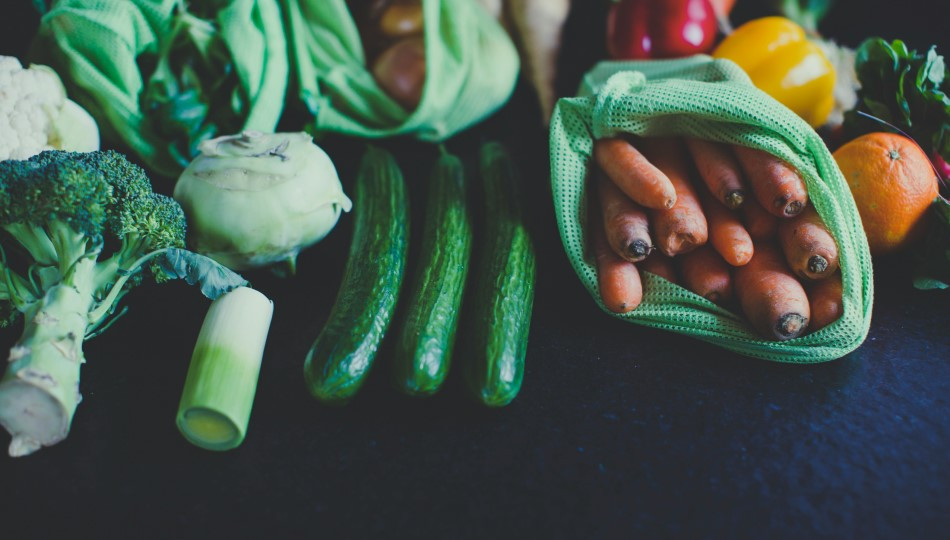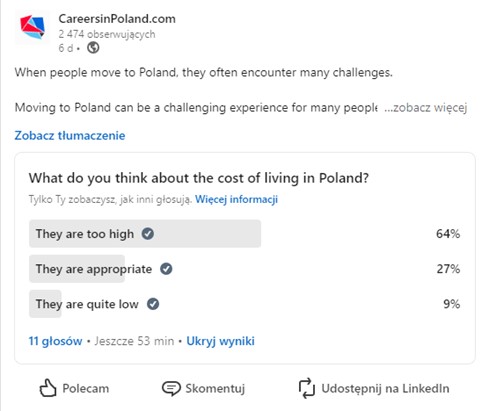Cost of living in Poland 2024: Why are food prices rising?

Editor

Photo by Markus Spiske on Unsplash
related articles
related offers
What do you think about the cost of living in Poland?
Recently, on our social media accounts, we asked our readers about their thoughts on the cost of living in Poland. And here is what they had to say:

While some respondents felt that the cost of living in Poland is quite affordable, especially when compared to prices in other European countries, 64 percent agreed that they are simply too high.
Some commentators even identified the major issues contributing to the higher cost of living In Poland. The chief factors included rising apartment rent, bills, and food prices in Poland.
Not so long ago we looked into the housing costs in Poland, and today we decided to consider another issue present in the mind of every grocery shopper. And that is – why is food in Poland getting so expensive?
When did food in Poland start getting so expensive?
Poland's food pricing landscape has evolved considerably over the past decades. In a broader historical spectrum, the country has benefited from its long agricultural tradition, which provided a relatively stable supply of various food products. However, since joining the European Union in 2004, Poland's food market has been more exposed to global economic dynamics.
In the early 2010s, Poland experienced relatively stable food prices with moderate inflation. This period of stability was underpinned by robust domestic agricultural production and favorable weather conditions. However, starting around 2017, food prices began to show a more concerning pattern, which got more volatile since 2022.
|
Year |
Consumption price index on the basis of the previous year = 100 |
|
2013 |
100,9 |
|
2014 |
100,0 |
|
2015 |
99,1 |
|
2016 |
99,4 |
|
2017 |
102,0 |
|
2018 |
101,6 |
|
2019 |
102,3 |
|
2020 |
103,4 |
|
2021 |
105,1 |
|
2022 |
114,4 |
|
2023 |
111,4 |
Data by GUS (pl. Główny Urząd Statystyczny, eng. Central Statistical Office),
Why are food prices in Poland rising?
A combination of factors, including the 2019 pandemic, adverse weather events, as well as the fluctuating global commodity prices, contributed to this volatility.
COVID-19 pandemic
There is little doubt that the COVID-19 pandemic in 2020 exacerbated consumption price trends.
Disruptions in supply chains and increasing costs associated with production and distribution increased prices of consumer goods. As the prices were getting higher and higher, and the new restrictions and pandemic prevention steps were putting into question our ability to access necessary products, panic buying and stockpiling began. This also led to short-term price spikes for certain essential items.
As the world adjusted to the pandemic, these initial shocks were somewhat mitigated. However, the underlying issues in supply chains persisted, keeping prices elevated.
Agricultural production and climate change
Poland's agriculture is a crucial sector of its economy. The country is a significant producer of grains, as well as various vegetables and fruits – for example, Poland is the largest apple producer in Europe, and the 4th largest in the world.
Climate change has increasingly affected agricultural yields, with extreme weather events such as droughts, heavy rains, and frosts becoming more frequent. For instance, droughts in 2018 and 2019 severely impacted crop yields, leading to reduced supply and increased prices for grains and vegetables. For 2024, the drought is likely to have its grim harvest, as well.
Additionally, the pandemic, again, is a little bit to blame. The agricultural sector's dependence on seasonal labor, often from neighboring countries, has faced challenges due to travel restrictions and health concerns during the pandemic. This further strained Poland’s production capacities.
Global events and market trends
The global market's influence on Polish food prices cannot be understated. Poland imports a significant portion of its food products, including exotic fruits, coffee, and seafood. Fluctuations in global commodity prices, driven by factors such as geopolitical tensions, oil prices, and trade policies, directly affect the cost of these imports. For instance, rising oil prices increase transportation costs, which are then passed on to consumers.
The Russia-Ukraine conflict has also had a notable impact, particularly on the grain market. Both countries are major exporters of wheat and other grains, and disruptions in their supply chains can lead to price spikes globally, affecting Polish consumers and producers alike.
Inflation
Poland's inflation rate has been a significant driver of food prices. High inflation erodes purchasing power, making food more expensive for consumers. In recent years, Poland has experienced higher inflation rates, partly driven by rising energy costs and supply chain disruptions.












